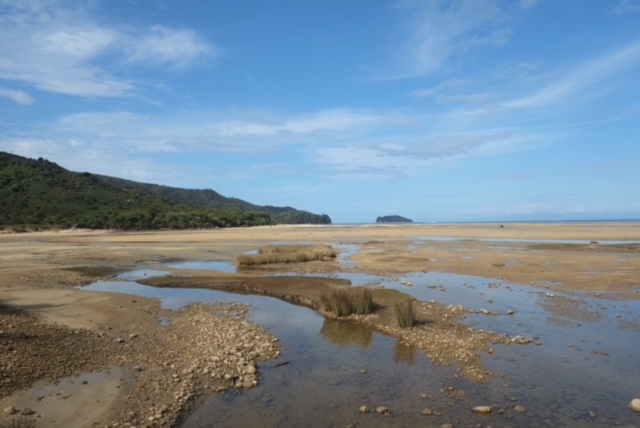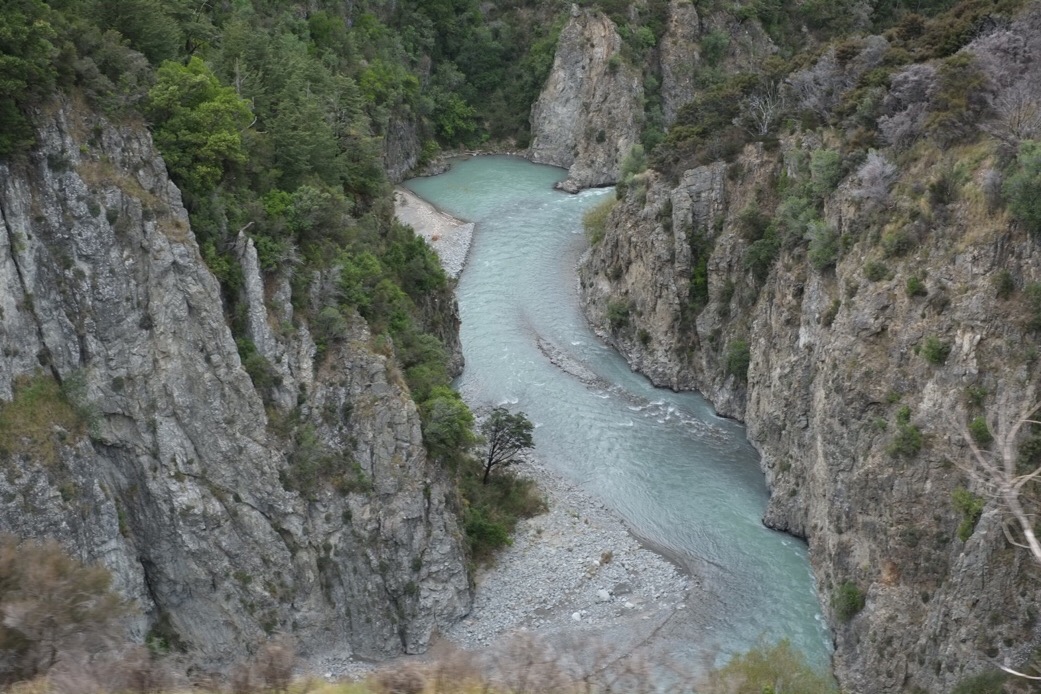The story further on

Vega
Hugh and Annie
Fri 30 Mar 2018 06:28
Yesterday we had a day return trip on the Tranzalpine railway between Christchurch and Greymouth. Considered to be one of the great scenic railway journeys of the world the route crosses the coastal plain (which is the largest flat area in New Zealand, gently rising from sea level up to 850 metres where it meets the mountains) before running through mountain passes, bridges and tunnels - including one of 17km - and then descending to Greymouth, at the mouth of the River Grey. The weather in South Island is heavily determined by the interaction of cold air from the antarctic and warm air from the tropics and Tasman sea. When warm moist air from the west or north meets cold air from the south it rides up over the cold air and condenses over the central alpine mountain range. The west side of the mountains receives up to 7 metres of rain each year (and we thought Scotland was wet!) while on the east side this drops to 1.5 metres. The natural vegetation on the west side of the mountains is rainforest (Podacast trees ie. hardwood at lower levels dominate and beech rainforest at higher levels). The beech is of little value for timber and it is this forest that remains largely in its original (primary) form. The east side of the mountains is largely tussock grassland although there are a surprising number of apple trees growing alongside the railway track (thought to be from apples cores thrown from the train!). For our trip there was a weather system from the west and we experienced dry conditions until we reached the mountains and absolutely torrential rain on the Greymouth side.
One of the striking things about NZ is how recent its modern (i.e. post European colonialist) history is. Even the Maoris have ‘only’ been here for 800 years, having come from the Marquesas in what is now French Polynesia as recent genetic tracing has shown. The first European settlers came in the 1840’s and their impact has been dramatic. On the Canterbury coastal plain, as crossed by the railway, 95% of the vegetation is now of imported European origin. Even the grass is English! Gorse is rampant in the foothills and before the settlers came there were no deciduous trees in NZ.
Whilst the east coast was settled primarily for agriculture, whaling, fishing and mining, the west coast was the subject of a gold rush in the 1860’s when the gold ran out in the east. Conditions were harsh and the area remained pretty isolated with access mainly by sea and with few safe harbours until the railway was opened in the 1920’s. Coal was also mined and high quality anthracite is still worked and exported around the world.
Whilst driving our clockwise tour of the South Island we stretched our legs with two days of walking along the north coast in the Able Tasman National Park - beautiful beaches with adjoining natural and regenerating forest - and stayed overnight in a very comfortable lodge (the extremely basic Department of Conservation huts all being fully booked, unfortunately). We were regretful about not doing the full three day walk until, on the second day, it started raining with a forecast of much heavier rain to come. After a night of torrential rain, sleeping in the car, being the hardy campers that we are we booked into the most wonderful Airbnb owned by Sebastian, who is half Scottish, half Filipino, a convert from Catholicism to Judaism and a staunch admirer of Queen and Commonwealth. We were treated to God Save the Queen, Jerusalem and Rule Britannia from the last night of the Proms on YouTube, to the bemusement of the other guests, a French Canadian/Filipino couple living and working in NZ. Airbnb does bring us into contact with some very interesting people! The property was on a hilltop overlooking the vineyards of the Marlborough region and had been a luxury holiday villa as well as a family home. We visited three vineyards (‘wineries’ out here) and have developed a taste for Pinot Noir - a few bottles of which now have a long and disturbed journey ahead of them on Vega to get back to the UK.
After my haircut this morning I had an hour or so to while away and so I left Annie with a hair full of tin foil and took a tram ride around Christchurch. What I hadn't appreciated on our first visit was quite how extensive the damage and reconstruction has been as a result of the 2011 earthquake. The city lost 80% of its historic buildings and most of the centre has been completely rebuilt. High rise buildings have been replaced by parkland and there is now a six story height limit.
Annie and I both like it here very much; in fact if it wasn’t quite so far from the UK we would consider it an option to come and live here. We love the friendliness of the people and their direct, no nonsense approach to life. There are aspects (attitudes) that are a bit old fashioned and the politicians spout exactly the same clichés and rhetoric in response to issues very similar to those back home. Nevertheless we haven't found the same political despair and angst that we experience at home and people do seem to laugh a lot!










